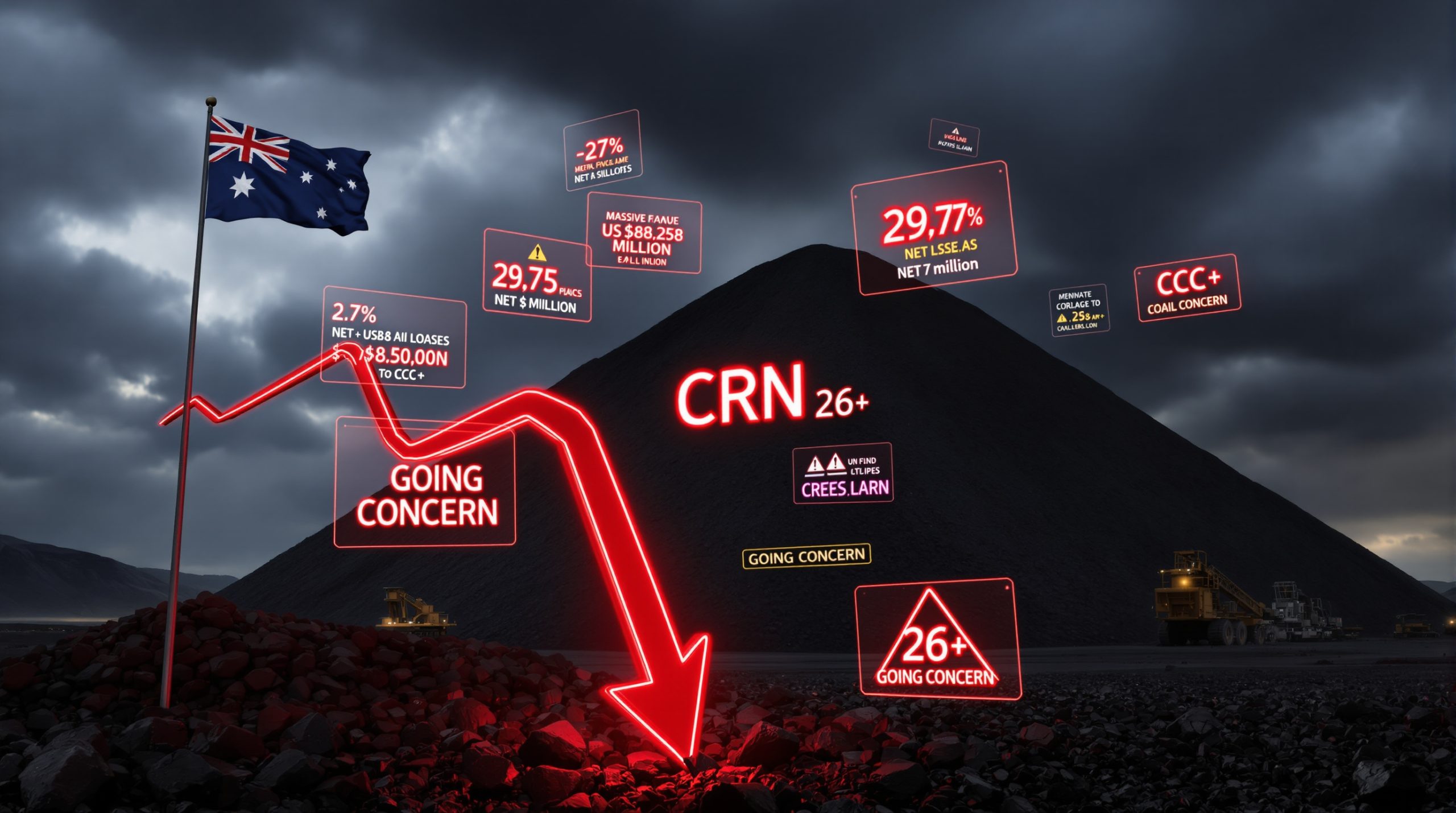Understanding Gallium's Strategic Value in Modern Technology
The global technology sector's dependence on gallium has reached unprecedented levels, with this silvery-white metal becoming indispensable for semiconductor manufacturing, renewable energy systems, and defense applications. Furthermore, the discovery of gallium enrichment at Kroussou in Gabon demonstrates how critical minerals energy transition initiatives can unlock new value within existing mineral systems. Current production statistics reveal an alarming concentration risk that has prompted governments worldwide to classify gallium as a critical mineral requiring urgent supply diversification.
China's overwhelming dominance in gallium production presents significant vulnerabilities for Western technology manufacturers. According to the U.S. Geological Survey's 2024 Mineral Commodity Summary, China accounted for approximately 98% of global gallium production in 2023, totaling around 265 metric tonnes from a worldwide output of 270 metric tonnes. This extreme geographic concentration has triggered strategic concerns across multiple jurisdictions.
Critical Mineral Classifications and Strategic Importance
The U.S. Department of Energy classified gallium as a critical mineral in its 2023 Critical Materials Assessment, specifically highlighting its essential role in renewable energy technologies, advanced semiconductors, and defense systems. Additionally, the European Union has similarly added gallium to its list of 34 critical raw materials, with some member states developing their own critical raw materials facility programs to enhance supply security.
Industrial applications drive gallium's strategic value across multiple high-tech sectors:
• Integrated circuits consume approximately 48% of global gallium production
• Optoelectronic devices account for 27% of consumption
• Photovoltaic applications represent 19% of end-use demand
• Specialized applications comprise the remaining 6%
Technical Properties Driving Demand
Gallium's unique physical and chemical characteristics make it irreplaceable in certain applications. With a melting point of 29.76°C and boiling point of 2,204°C, gallium forms critical compounds including gallium arsenide (GaAs) and gallium nitride (GaN) used in high-speed electronic devices, radio frequency components, and power electronics systems.
The metal's applications span critical technology sectors including high-electron-mobility transistors for satellite communications, multi-junction solar cells for space applications, and light-emitting diodes across consumer electronics and display technologies. Consequently, modern mine planning processes increasingly consider critical minerals potential alongside traditional commodities.
How Was Gallium Discovered at the Kroussou Project?
Apollo Minerals' identification of gallium enrichment at Kroussou in Gabon represents a systematic approach to unlocking previously overlooked critical mineral potential within an established zinc-lead exploration project. The discovery emerged through comprehensive review of existing geological data combined with targeted field investigations across the 2,363 square kilometer project area.
Systematic Geological Investigation Methods
The gallium discovery resulted from Apollo's methodical review of mapping data, surface sampling results, and historical drilling records. Company geologists identified that gallium occurs within the same embayment structures that host zinc-lead mineralization, revealing a previously unrecognized critical mineral dimension to the project.
Field mapping across the Doubaye (TP7) and Ngongui (TP8) prospects confirmed 9.2 kilometers of prospective sedimentary contacts, with rock chip sampling returning grades up to 3.4% zinc plus lead at TP7 and 3.0% zinc plus lead at TP8. Visible galena observed in outcrop samples confirmed the presence of lead-bearing mineralization systems.
Embayment Structure Analysis
Apollo's geological team focused on embayment structures, which represent depositional basins or structural lows within the sedimentary sequence where mineralization concentrates. The company has identified 24 total embayment targets at Kroussou, with only six previously drill-tested for gallium content, leaving 18 untested embayments with remaining exploration potential.
Recent field mapping at TP8 extended the known embayment by 700 meters, opening fresh exploration ground and demonstrating the expandable nature of the mineralized system. This extension work exemplifies the systematic approach Apollo has adopted to define the full extent of critical mineral enrichment across the project.
Integration of Historical Data
The identification process involved systematic analysis of archived drill core and assay data to recognize gallium enrichment patterns that had previously been overlooked during zinc-lead focused exploration campaigns. This data integration approach revealed that gallium enrichment occurs consistently across multiple weathering zones and geological horizons.
What Are the Key Gallium Enrichment Results at Kroussou?
Apollo Minerals has reported significant gallium enrichment at Kroussou in Gabon, with intercepts consistently exceeding background crustal concentrations and indicating potential for economic recovery alongside zinc-lead mineralization. The gallium results span wide intervals within the weathered profile, suggesting bulk tonnage characteristics rather than narrow high-grade zones.
High-Grade Intercepts and Distribution
The most significant gallium intercepts demonstrate consistent enrichment across various geological zones:
| Depth (metres) | Width (metres) | Grade (ppm Ga) | Zone Type |
|---|---|---|---|
| 0.4-3.9 | 3.5 | 36 | Saprolite |
| 5.2-7.7 | 2.5 | 34 | Laterite |
| 5.4-12.4 | 7.0 | 31 | Mixed profile |
| 1.6-14.8 | 13.2 | 30 | Weathered sediments |
| 2.3-13.8 | 11.5 | 30 | Weathered profile |
Geological Context and Significance
The highest gallium concentrations occur within saprolite and laterite zones in the upper 15 meters of the weathered profile. Saprolite represents partially weathered rock material retaining original textures, while laterite constitutes iron oxide-enriched residual material formed through intense tropical weathering processes.
According to the U.S. Geological Survey, gallium occurs naturally in Earth's crust at average concentrations of 19 parts per million, making Apollo's intercepts of 30-36 ppm represent significant enrichment above background levels. This enrichment suggests both weathering concentration processes and potential primary sedimentary gallium accumulation.
Spatial Relationships with Base Metal Mineralization
Gallium enrichment occurs within siltstone horizons and embayment structures that also host zinc-lead mineralization. The vertical zonation pattern shows highest concentrations in oxidized upper portions, with gallium mineralization present throughout sedimentary rocks hosting base metal sulfides.
The consistent grades across wider intervals, particularly the 13.2-meter intercept at 30 ppm gallium from 1.6 meters depth, suggest potential bulk tonnage characteristics that could support economic recovery scenarios alongside traditional base metal extraction.
Where Does Gallium Occur Within the Kroussou Deposit System?
The gallium enrichment at Kroussou in Gabon demonstrates a systematic distribution pattern controlled by both weathering processes and structural geology, with concentrations spanning multiple geological environments from near-surface laterite zones to deeper sedimentary host rocks. The widespread occurrence across 135 kilometers of prospective geological contacts indicates significant exploration potential beyond currently defined zones.
Weathering Profile Distribution
The gallium enrichment follows a distinct vertical zonation pattern within the tropical weathering profile:
Saprolite Zone (0-15 meters): Contains the highest gallium concentrations, including the 36 ppm intercept over 3.5 meters. This zone preserves original rock textures while concentrating incompatible elements through chemical weathering processes.
Laterite Zone (upper profile): Represents the most intensely weathered material with significant iron oxide enrichment, hosting gallium concentrations up to 34 ppm over 2.5 meters.
Mixed Weathered Profile: Transitional zones between saprolite and less weathered material contain gallium concentrations averaging 31 ppm over wider intervals.
Sedimentary Host Rocks: Underlying sedimentary sequences contain gallium mineralization at 30 ppm across substantial widths, indicating either primary enrichment or secondary concentration through diagenetic processes.
Geographic Distribution and Target Areas
Apollo has identified gallium enrichment potential across multiple prospect areas, with confirmed occurrences at Doubaye and Ngongui embayments representing only a fraction of the total opportunity. Field mapping has extended prospective strike lengths, with the TP8 embayment expansion of 700 meters demonstrating significant growth potential.
The company has defined 23 target areas across the broader Kroussou trend, encompassing 135 kilometers of prospective geological contacts. This extensive strike length indicates that gallium enrichment may occur across a much larger area than currently drill-tested zones.
Structural Controls on Mineralization
Embayment structures appear to control both zinc-lead and gallium mineralization at Kroussou. These depositional or structural features concentrate mineralization within specific sedimentary horizons, creating predictable exploration targets across the project area. Moreover, this discovery aligns with broader trends in mining industry innovation where companies systematically reassess existing projects for critical mineral potential.
The association between gallium and base metal mineralization suggests shared geological controls, potentially enhancing the economic attractiveness of multi-metal recovery scenarios. The consistent occurrence across multiple embayments indicates a regional metallogenic system rather than isolated anomalies.
How Does Gallium Enrichment Impact Kroussou's Development Potential?
The identification of gallium enrichment transforms Kroussou from a conventional zinc-lead project into a multi-metal critical minerals asset with enhanced economic potential and strategic value. This discovery could significantly improve project economics through by-product credits while positioning Apollo Minerals within the rapidly growing critical minerals sector.
Economic Enhancement Through By-Product Credits
Apollo's existing exploration target at Kroussou encompasses 140-300 million tonnes at 2.0-3.4% zinc plus lead based on only six prospects. The addition of gallium as a potential by-product could generate substantial revenue credits, particularly given gallium's strategic importance and pricing volatility.
Recent surface sampling results demonstrate the continued expansion of base metal mineralization, with rock chip samples returning up to 3.4% zinc plus lead at TP7 and 3.0% zinc plus lead at TP8. Previous drilling at Bouambo West returned 5.8 meters at 6.5% zinc plus lead, indicating high-grade potential across the broader system.
Integration with Base Metal Processing
Standard zinc and lead smelting operations already recover gallium as a by-product, with approximately 95% of global gallium production occurring through bauxite refining and zinc smelting according to USGS data. This existing recovery infrastructure could potentially facilitate gallium extraction from Kroussou ores through established metallurgical pathways.
The co-occurrence of gallium with zinc-lead mineralization suggests potential for integrated processing approaches that maximize metal recovery across all valuable constituents. Such integration could reduce processing costs while increasing overall project revenues, similar to strategies employed at Australia's critical minerals reserve facilities.
Strategic Positioning in Critical Minerals Market
Gallium's classification as a critical mineral by major economies creates potential for government support and strategic partnerships. The extreme supply concentration in China has prompted Western governments to seek alternative sources, potentially providing development incentives for projects like Kroussou.
Apollo's Managing Director Neil Inwood described the gallium discovery as adding "an exciting new dimension to the Kroussou mineralisation," indicating management's recognition of the strategic value enhancement. The company views this as a developing opportunity with potential across the entire project area.
What Makes the Kroussou Location Strategically Important?
Kroussou's location in western Gabon provides significant logistical and jurisdictional advantages for potential critical minerals development, combining established mining infrastructure with stable regulatory frameworks and direct access to international markets. These locational benefits could prove crucial for any future gallium recovery operations serving Western supply chains.
Infrastructure and Accessibility Advantages
The project benefits from sealed road access and direct links to port infrastructure, providing efficient transportation routes for potential mineral concentrates or refined products. This infrastructure access contrasts favorably with many remote critical mineral projects that face significant logistical challenges and capital requirements.
Gabon's established mining jurisdiction provides regulatory familiarity and operational precedents for mineral development projects. The country's experience with large-scale mining operations creates an established framework for environmental permitting, community engagement, and operational oversight.
Regional Geological Context
Kroussou's position within the Central African mineral belt places it within a region known for significant base metal and critical mineral occurrences. This geological setting suggests potential for additional discoveries and regional synergies with other mining operations.
The project's 2,363 square kilometer area provides substantial exploration upside within a single jurisdiction, reducing operational complexity compared to multi-jurisdictional projects. The large land package allows for systematic exploration across numerous target areas using consistent methodologies and regulatory frameworks.
Strategic Supply Chain Implications
Western Gabon's geographic position provides access to both Atlantic shipping routes and regional processing facilities, potentially supporting diversified market access for gallium and base metal products. This positioning could prove valuable for serving both European and North American critical mineral supply chains.
The potential for Kroussou to contribute to gallium supply diversification away from Chinese dominance aligns with Western strategic mineral security objectives, potentially attracting government support or strategic investment partnerships focused on supply chain resilience.
How Does This Discovery Compare to Global Gallium Sources?
Apollo's gallium discovery at Kroussou represents a potentially significant addition to the limited global supply base, particularly as a potential source outside China's dominant production system. The grades and distribution patterns compare favorably with other gallium occurrences worldwide, while the association with zinc-lead mineralization provides established metallurgical recovery pathways.
Global Gallium Production Landscape
Current global gallium production demonstrates extreme geographic concentration that creates strategic vulnerabilities:
| Source Type | Production Method | Geographic Concentration | Market Share |
|---|---|---|---|
| Bauxite processing | Aluminum refinery by-product | China, Australia | ~70% |
| Zinc refining | Smelter residue recovery | China, Europe | ~25% |
| Primary deposits | Direct mining (rare) | Limited locations | ~5% |
China's dominance stems from its large-scale aluminum and zinc refining operations, which generate gallium as a by-product through established industrial processes. Most gallium production occurs at concentrations of 50-100 ppm in bauxite residues and 10-50 ppm in zinc refinery residues.
Comparative Grade Assessment
Kroussou's gallium intercepts of 30-36 ppm occur within easily accessible weathered profiles, potentially offering lower-cost extraction compared to deep mining operations. The wide distribution across multiple zones suggests bulk tonnage potential that could support sustained production rates.
Industry literature indicates that gallium recovery economics are typically evaluated at concentrations above 25-30 ppm in material amenable to large-scale processing. Kroussou's grades fall within this economic range, particularly when combined with zinc-lead recovery credits.
Supply Security and Diversification Potential
The potential for Kroussou to contribute meaningfully to gallium supply diversification depends on the scale of recoverable resources and the efficiency of extraction processes. Even modest production volumes could prove strategically significant given the concentrated nature of current supply sources.
Western governments' focus on critical mineral supply security creates potential demand for alternative gallium sources, particularly those located in politically stable jurisdictions with established mining frameworks. Kroussou's location and geological characteristics position it favorably within this strategic context.
What Are the Next Steps for Gallium Development at Kroussou?
Apollo Minerals faces a systematic development pathway to advance gallium potential at Kroussou from initial discovery through resource definition and eventual extraction integration. The company's immediate priorities focus on technical characterization while longer-term planning addresses development scenarios and market positioning.
Immediate Technical Work Programs
Apollo's announced technical program includes several critical components:
Gallium Distribution Assessment: Systematic evaluation of gallium occurrence across all 18 untested embayment targets, expanding the known footprint of enrichment beyond currently defined zones.
Mineralogical Characterization: Detailed analysis of gallium-bearing minerals to understand occurrence modes, liberation characteristics, and optimal extraction approaches.
Metallurgical Test Work: Laboratory and pilot-scale testing to evaluate gallium recovery methods, determine extraction efficiencies, and assess integration with zinc-lead processing circuits.
Expanded Drilling Programs: Systematic drilling at TP7 and TP8 targets where field mapping has identified new prospective ground and extended embayment structures.
Resource Definition and Economic Assessment
Following successful technical work, Apollo will need to define gallium resources across the project area and integrate recovery scenarios into broader project economics. This phase requires:
• Comprehensive drilling to establish gallium resource continuity
• Metallurgical flow sheet development for multi-metal recovery
• Economic modeling incorporating gallium by-product credits
• Environmental and regulatory assessment for critical mineral extraction
Market Development Considerations
Long-term gallium development requires engagement with potential end-users and establishment of market relationships. The strategic nature of gallium supply creates opportunities for direct customer partnerships or government-supported offtake arrangements.
Apollo's position as a potential alternative gallium supplier outside Chinese dominance could attract strategic investment or partnerships focused on supply chain security objectives.
How Significant Is This Discovery for Apollo Minerals and Investors?
The gallium enrichment discovery fundamentally transforms Apollo Minerals' investment proposition, elevating the company from a conventional base metals explorer into a diversified critical minerals developer with enhanced strategic value. This transformation occurs at a time when critical mineral supply security has become a priority for Western governments and technology companies.
Project Value Enhancement Potential
Apollo's existing exploration target of 140-300 million tonnes at 2.0-3.4% zinc plus lead provides a substantial foundation for multi-metal development scenarios. The addition of gallium as a potential by-product could significantly enhance project economics through:
• Revenue diversification across base metals and critical minerals
• By-product credits reducing zinc-lead production costs
• Strategic value premium for critical mineral exposure
• Government support potential for supply security projects
Market Positioning and Investment Appeal
The discovery positions Apollo within the rapidly growing critical minerals investment sector, where companies with proven resources and development potential command premium valuations. Gallium's strategic importance and supply concentration create compelling investment narratives around supply security and technological advancement.
Apollo's stock price response to the gallium announcement reflects investor recognition of the strategic value enhancement, with the discovery adding material upside to existing zinc-lead development scenarios. However, according to market analysis, the full market appreciation of this discovery may continue developing as technical work progresses.
Comparison with Sector Developments
Critical mineral discoveries globally have attracted significant investor attention and strategic partnerships, particularly those involving supply diversification away from Chinese dominance. Apollo's gallium enrichment discovery places the company within this high-priority investment category.
The combination of established infrastructure, favorable jurisdiction, and multi-metal potential creates a differentiated investment proposition compared to single-commodity or higher-risk jurisdictional plays in the critical minerals sector.
What Challenges and Opportunities Lie Ahead?
Apollo Minerals must navigate both technical and strategic challenges to realize the full potential of gallium enrichment at Kroussou, while capitalizing on favorable market dynamics and government priorities supporting critical mineral development. Success requires balancing immediate technical advancement with longer-term strategic positioning.
Technical and Economic Challenges
Metallurgical Complexity: Proving economic gallium recovery alongside zinc-lead extraction requires sophisticated metallurgical processes and potentially specialized equipment. Integration challenges could impact overall project economics if recovery rates prove suboptimal.
Quality Specifications: End-use gallium applications demand high purity standards, requiring refining capabilities that may necessitate partnerships with established processors or significant capital investment in specialized facilities.
Resource Definition: Expanding gallium resource definition across Kroussou's 135 kilometers of prospective contacts requires substantial drilling programs and geological interpretation to establish economic concentrations and continuity.
Strategic Market Opportunities
Government Support Potential: Critical mineral projects increasingly attract government funding, strategic partnerships, and development incentives focused on supply chain security objectives. Kroussou's potential contribution to gallium supply diversification could qualify for such support programs.
Technology Sector Partnerships: Direct partnerships with technology companies seeking secure gallium supply could provide development funding, offtake agreements, and market access advantages compared to traditional commodity marketing approaches.
Supply Chain Integration: The strategic importance of gallium creates opportunities for vertical integration or joint ventures with downstream processors, potentially capturing additional value across the supply chain. Furthermore, recent reports from industry sources highlight growing investor interest in such strategic partnerships.
Regulatory and Environmental Considerations
Gabon's established mining regulatory framework provides precedents for environmental permitting and community engagement, though critical mineral extraction may require additional considerations around export controls and strategic mineral classifications.
The environmental profile of gallium recovery as a by-product from existing mining operations generally proves more favorable than developing standalone critical mineral projects, potentially accelerating permitting processes and community acceptance.
Transforming a Base Metal Project into a Critical Minerals Asset
Apollo Minerals' identification of gallium enrichment at Kroussou represents a paradigm shift in project value and strategic positioning, transforming a conventional zinc-lead exploration play into a diversified critical minerals asset with enhanced economic potential and geopolitical significance. This transformation exemplifies how systematic geological investigation can unlock previously unrecognized value within established mineral systems.
Discovery Significance and Strategic Impact
The Kroussou gallium discovery demonstrates several key implications for the broader critical minerals sector:
• Hidden Value Recognition: Systematic review of existing geological data can reveal critical mineral potential overlooked during conventional exploration programs focused on traditional commodities.
• Multi-Metal Integration: The co-occurrence of gallium with zinc-lead mineralization provides established metallurgical pathways for integrated recovery, potentially improving overall project economics.
• Supply Chain Diversification: Western Gabon's location and infrastructure advantages position Kroussou to contribute meaningfully to gallium supply diversification efforts.
• Strategic Investment Appeal: Critical mineral discoveries attract premium investor attention and potential government support compared to conventional base metal projects.
Development Pathway and Timeline Considerations
Apollo's advancement of gallium potential at Kroussou requires systematic progression through technical validation, resource definition, and market development phases. The company's immediate focus on mineralogical characterization and metallurgical testing provides the foundation for longer-term development planning.
The integration of gallium recovery with zinc-lead development scenarios could accelerate project advancement by leveraging established base metal processing infrastructure and reducing standalone development costs for critical mineral extraction.
Regional and Global Implications
Kroussou's potential contribution to global gallium supply diversification occurs within a broader context of Western strategic mineral security initiatives and technology sector supply chain resilience efforts. The project's success could encourage similar systematic investigations at other base metal projects worldwide.
The discovery reinforces Central Africa's importance as a source region for critical minerals, potentially attracting additional exploration investment and infrastructure development to support strategic mineral extraction across the region.
This analysis is based on publicly available information and should not be considered investment advice. Mineral exploration and development carry inherent risks, and readers should conduct independent research and consult qualified professionals before making investment decisions. All statements regarding future development plans, resource potential, and economic projections are forward-looking and subject to significant uncertainties and risks.
Looking to Invest in the Next Critical Minerals Discovery?
Discovery Alert's proprietary Discovery IQ model delivers instant notifications when significant ASX mineral discoveries are announced, transforming complex geological data into actionable investment insights. With historic discoveries like gallium enrichment potentially representing substantial market opportunities, subscribers gain the advantage of real-time alerts on critical mineral developments ahead of broader market recognition. Begin your 30-day free trial today to position yourself at the forefront of emerging mineral discoveries across the Australian market.




